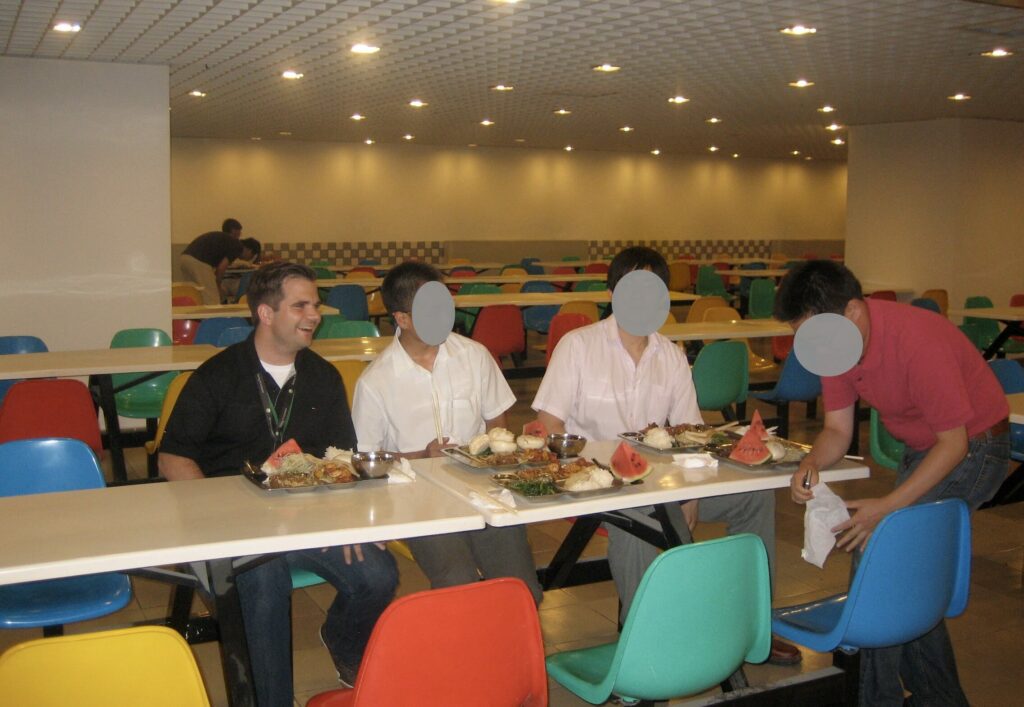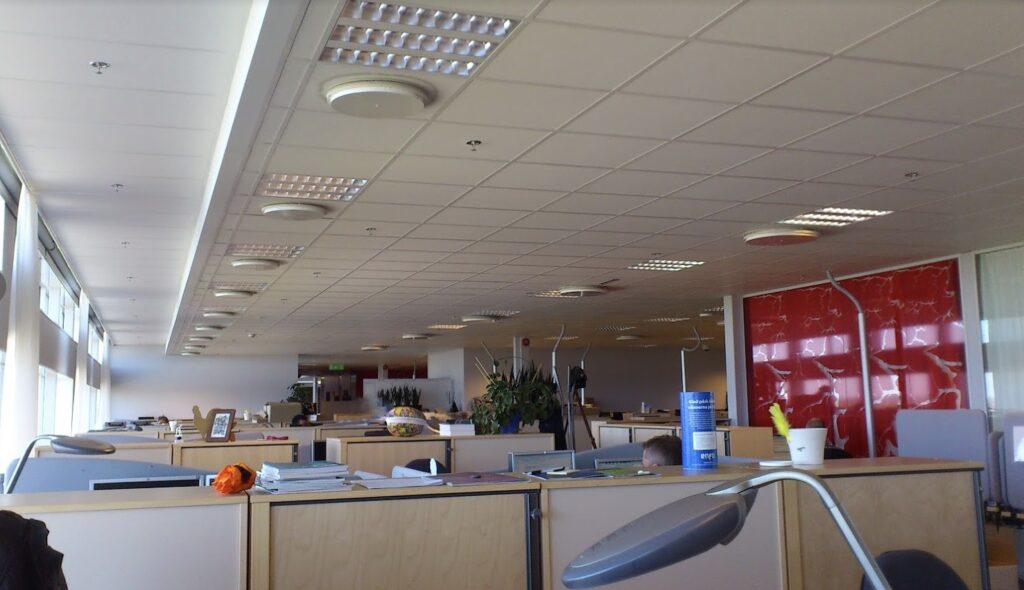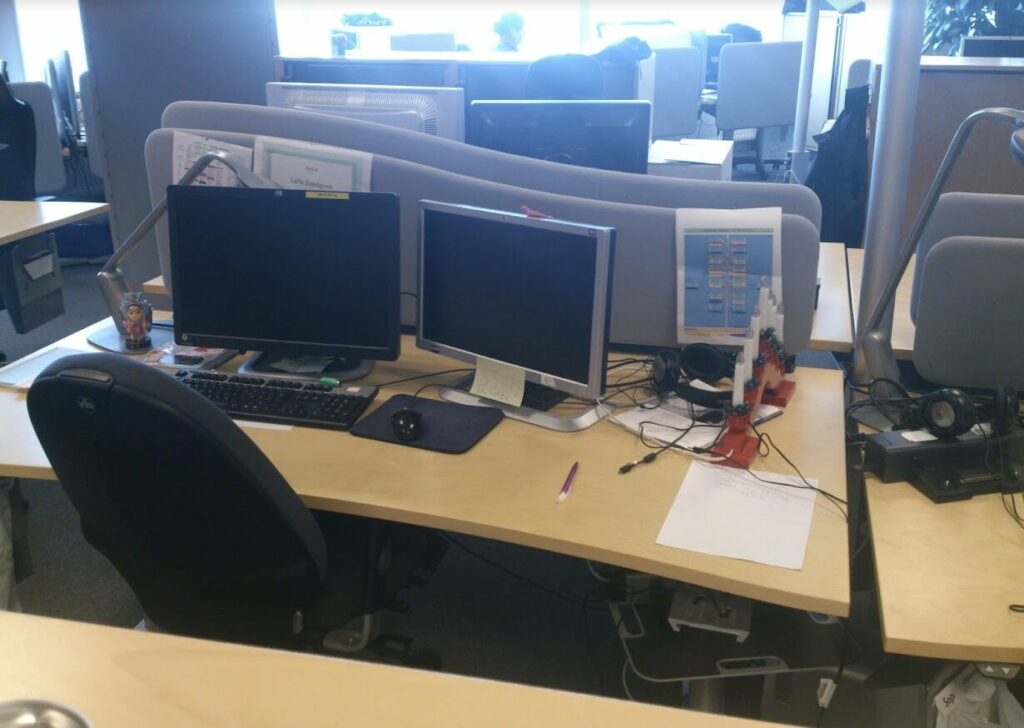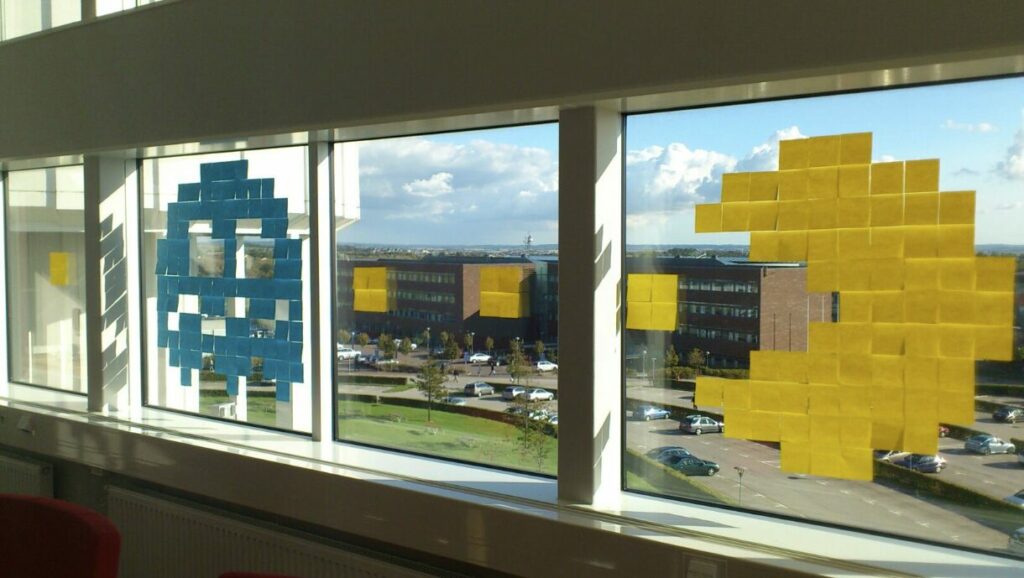My journey at Sony Ericsson – inside the iPhone race
Even though it wasn’t my first job in software, I usually say my work life boot camp was at Sony Ericsson (SEMC). I spent five years in this great company, from January 2008 until November 2012, first as a contractor under Sigma Exallon, later as self-employed in Bjuväng Solutions, and at the end as an employee of Sony Mobile.
I’m not going to lie – I did not work on the cool phone software/hardware projects. I was in the IT department. In the beginning, I focused on IT Support systems, and later, architecture area manager with special focus on software to protect confidential prototype product images from leaking, software to share information between the Sony and Ericsson board, and more. I have previously written this article on one of the incidents caused by a failed deploy at SEMC.
I want to take you on a short journey and share some memories from this time. This story is centered around photos that I have kept and is not an extensive story on all things SEMC. This post is probably mostly interesting to other SEMC alumnis.
The Glorious Office


Here is where I spent the first year of my SEMC career. This was called the Madrid building. At the time, we had 8 or so buildings around Lund, and as work was really cross-office, we also had internal shuttle buses so we could move between all of these offices. Here you can also see a close-up of what my desk looked like. Sony was at the time producing the Sony Vaio line of laptops – but in SEMC, we used HP laptops.


In this setup, we were working in these 4-seat sections. Next to me sat Mattias, Ashraf, and Andreas. Believe it or not, in the basement of this building, we had a test factory line. It was huge. Being part of not-so-cool IT at the time, I looked at the employees with their white coats on and dreamt of one day working with something like that. There was an incident with a break in where someone stole lots of prototypes from this location. Article in Swedish here.
The Madrid building was shut down a while after the new Glasgow and New York buildings was finished. The environment wasn’t great, but I loved every moment of it.
The era of strange phones started
I enrolled in an internal test program for employees and had access to many prototypes. Some never made it to production, a couple of the ones that made it is mentioned in this text.
This was a time when the iPhone had been released, and we were struggling with innovating and keeping up. We had invested significantly in the Symbian OS/UIQ and tried to create something with that.


The Satio, internal codename Kokoro, was one of the first attempts at innovating with the re-born all-touch factor. We had full touch screens since many years, but the iPhone had great multitouch and sensitivity. The Satio was released in 2009 with the Symbian OS. I tried it out a bit earlier and said the main camera with 12MP was great, the rest not so much. I wanted it to be great, I wanted us to catch up!
We did lots of strange things back then. One which I, at the time, thought was cool, was the Xperia Pureness, codename Kicki.
It was a see-through phone with “invisible” buttons that lit up when pressing any button. The concept was cool until you took it out into the sun. 😊 I remember the full Outlook integration as a huge plus on this device. Just like the Satio, I rooted for this strange phone to really showcase the innovative side of our company.
The outsourcing
Unfortunately, it was decided that large parts of my team would be replaced with teams in Beijing instead. Management decided that I should stay on as a tech lead and help set up and train these new teams. A new chapter of my career started, and I was spending more and more time in the Beijing high-rise office, mostly on floor 17 or 19. Here is another post I wrote about some learnings from that time.

This was a nice building with the company “The North Face” occupying the first few floors, and we had the rest of the building.
I have so many memories from this part of my career. Simple things like, how to get to the office when very few people knew english :)The first trips i had some problems even getting to the office. I used a lot of different pre-written cards that my local coworkers created for me when I had to take a taxi. Another drawback was that if it was raining, the taxi drivers always picked up locals instead of visitors like me. One rainy evening, I had to wait for 90 minutes to get a taxi, something which usually took 2-3 minutes.
After a few trips, I made sure to book the hotel closest to the office; walking distance was great and a huge improvement for me.
I loved spending time in the SEMC building; I had so much to share, and my new colleagues were eager to learn. I missed my old teams in Lund, but can honestly say I loved the adventure of traveling back and forth to Beijing and work with my new teams.

The offices were way better than the Madrid building, brighter and more spacious. Still a bit too much cubicle for my taste, and in the summer, it became very warm and humid.

Sometimes I would just stand by my desk and observe the huge crossing right next to the office. Notice how long you had to walk to cross the streets? I thought traffic looked crazy but never observed any incidents down there.


As everyone knows, the smog in Beijing is brutal. Often we couldn’t see that far, and I would say this view with the smog was an average day. The best days was those after the rain, where the clear blue sky would show for a while. But you needed to look out, the asphalt often became slippery after the rain.

In the basement, we had the legendary staff canteen. Here you could get a good lunch for as low as 5-10 Swedish krona, around 0.5-1 EUR. In this picture, you can see that the chairs were welded to the table structure and could not be moved, and the food was served on these metal plates. There were no windows, but it didn’t matter; during lunch, this place was super crowded!

Me and my colleague Magnus A brought a Dalahäst as a gift to the team. A Dalahäst is a traditional Swedish handcraft. It was a very appreciated gift. We also brought the game Kubb, sadly I can’t find the pictures of us playing it in the office hallway. It was super important for us to create a strong bond with our teams in Beijing. We spent significant time to make sure they felt empowered and included.

Internal showroom in the high-rise building. We were not a big brand in China, not at all like home in Sweden, internal showrooms like this probably helped with getting our staff acquainted with the product line. I remember a colleague telling me his parents wasn’t happy he was working for a half japanese company. The historic relation really lived on and when Sony acquired the full lot, some people were openly saying they would leave.
New office back home


Back home, we had finally been granted access to sit in the brand-new New York building. It was a new development and looked super awesome, for me it was a big upgrade from the Madrid building. Today the software company Qlik resides in the New York building. Anyway, after a while we were fortunate enough to move to the new Glasgow building.

The Glasgow building. I was on the 5th or so floor, in the black part of the building and later moved into the white part of the building. To the right you can see a glimpse of the Greenland building, this was where the hardcore phone projects sat at this time.

It was also a great place to work with bright colors and windows everywhere. Here you can see the view from my desk. Outside my window you will today see the huge European Spallation Source and the MAX IV Laboratory.

Here, the desk of our legendary colleague in incident management, Lalle S. I believe I took this picture because it was close to summer and Lalle still had the Adventsljusstake on his table. Typical observation was that we often paired up screens randomly as seen on this desk.


There were huge coffee areas right in the intersection between the white and the black side of the building. Here I’m having a coffee with my colleague. Looks like there’s some type of backlog in the background. We also had a staff restaurant on the first floor along with a very nice café with a barista and everything.
The Android-era and marketing efforts
Once we went full Android, we also had large Android figures greeting everyone at the entrance. Even though times were tough, we believed in the popularity of Android and thought we had a shot at getting a fair market share.

One day Caroline Wozniacki, a famous tennis player ranked as #1 in 2010, was visiting our office. We were a major sponsor of several tennis events on the WTA tour. One time we also booked the Malmö hockey arena for our Christmas party. The whole arena. Visiting Sony artists performed, we were gifted new earphones, and we simply had a great evening.
Happenings like this really created a proud feeling of working for SEMC.
Talking about a sense of pride, I always smiled and felt good when I saw our marketing in different places.


When traveling with the long-distance X2000 trains in Sweden, this is what you would be looking at. The back of the foldable tray. The feeling that I had helped develop this was great. The phone itself is another story. 😊 This is the Xperia Play, codename Zeus, which I still have. It’s also still working.
There were several things that made this phone and its sales not so great. We launched it with an awesome Superbowl commercial. The problem was that the phone was released several months after the show, and public interest had gone down. The screen was also strangely weak with very low brightness. The rumors at the time were that we wanted a real gaming chip from the Sony PSP but were denied during the project (this might also just be wishfull thinking). So, the phone was launched with several so-so games, underpowered, and the game catalog never really took off. What a shame. I still enjoy this form factor.

One more example: I saw this marketing piece while waiting for the bus. The phone with the transparent band was the Nozomi, or as the public got to know it, the Xperia S released in 2012. I remember we had a team meeting where the designer of the phone came and told us the story behind it and its ionic transparent band. This is how you build teams working together with pride!


Going back to the end of 2009, we presented our first Android phone, internally codenamed Rachael – the Xperia X10i, a new era of Sony Ericsson was born. I loved the looks of it. The internal software was a typical first try – slow and not very intuitive. Here you can also see that the navigation buttons at the bottom were reversed compared to other vendors with Android. What you see on the screen here is Mediascape. The phone launched with Timescape for social feeds and Mediascape for photo feed and more. Even the back was beautiful on the X10. It was such a shame we couldn’t make it work better at launch.

Wait – what’s this? A Sony Ericsson phone with Sony branded firmware? I don’t remember the full story, but this is the Xperia Arc, codename Anzu. This was released in April 2011, and remember that Sony officially acquired the full stake of the company in early 2012. Let’s say work was being done before the announcement. Side comment, I believe the Arc is the best phone I have ever had. It was light, replaceable battery, and great performance. I still have one laying around, but the battery has unfortunately expanded. Notice the navigation buttons order is now reversed again, compared to the X10 pictured before this one.

When talking about the phones, I also want to mention this little fellow, the X10 Mini, codename Robyn. At the time, most phone manufacturers produced larger screens. They kept getting larger, and at the time, there was an idea that we could produce a smaller phone but with the same capabilities as the large ones. Some people probably said we went too far with this one 😊 I still have this phone, and last time I checked, it still worked. Do you know SEMC/SOMC was the largest contributor to Android for a long while? Larger than for example Samsung. So essentially, Sony software runs/was running in your Samsung phone. Crazy stuff.
The Recoginition award and the end of an era

I’ve written how important it is to build strong teams with pride in their work. Another thing that created that feeling for me was this: I am still proud of this recognition award! The story behind is simple. A couple of colleagues had scheduled a large deploy and migration and went on a conference abroad. I was almost alone in my area because of this when the deploy hit. I had to “kavla upp ärmarna” and fix the situation. Yet another learning for me, but also for my colleagues attending that conference 😊

At the end of my tenure with Sony Mobile, I visited the new and improved Sony office in Beijing, where my teams had relocated. Sadly, I don’t have pictures of the workplaces, but I do have some from some of the common areas.

This was a fika room where we had tea, coffee, and celebrated releases with sweets and cake.

Relaxing area to chit chat. Something we didnt have that much of in the highrise building.
Everyone working at SEMC back then remembers the massive layoffs we were hit with. Thousands of people were let go. I remember specifically one all-hands event where they forgot to draw the box for my organization. I asked my colleague Andreas if we were laid off, and the reply was simply, “who knows.” By this time, we were so used to the layoffs that we didn’t even care. Later that day, a correct org chart was mailed out, and we were still in it.

One of the last efforts from me and my colleague Lars was this Pacman display facing the Greenland building.
Overall, I had such a great time at SEMC, later SOMC, and look back with pride at what we did back then. It was a different time; the phone industry was largely experimental after the launch of the iPhone. Sadly, Sony could never recover its position in the market. After 5 years and thousands of layoffs, I said enough, I needed to do something else.
That’s my short story centered around pictures from this time. I have removed people’s names, dates, prototypes, and locations to keep confidentiality. I have a lot more pictures from back then, most of them featuring my colleagues, I chose not to post any of these pictures at this time. Pictures are my own.


